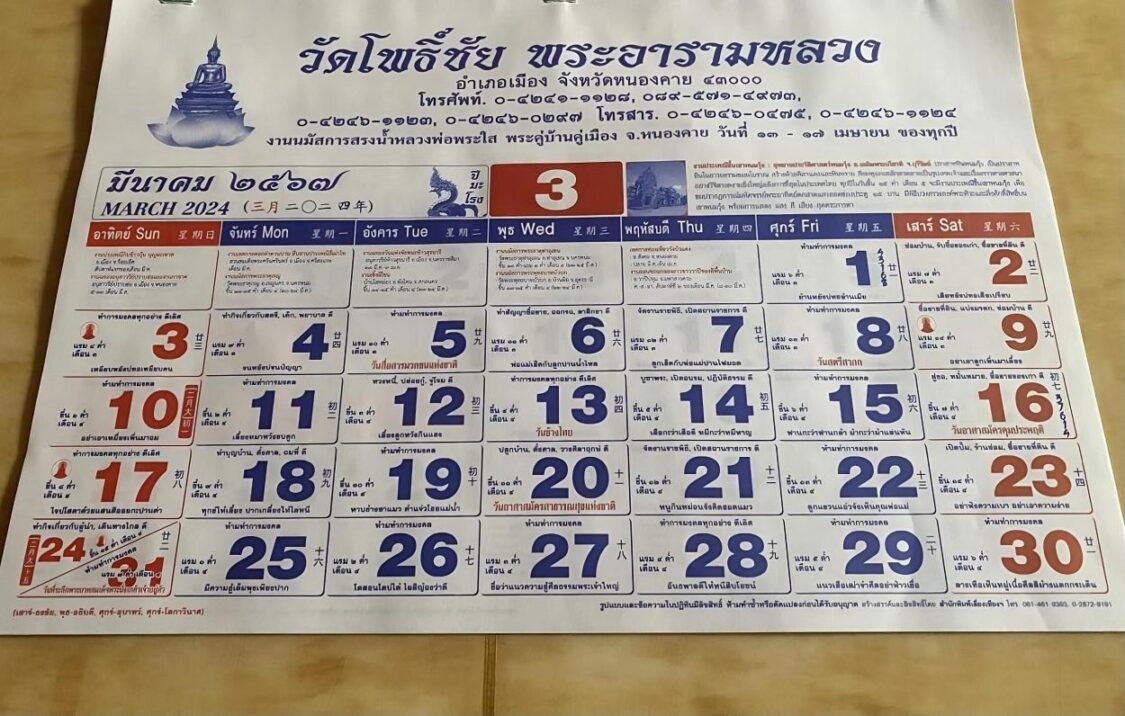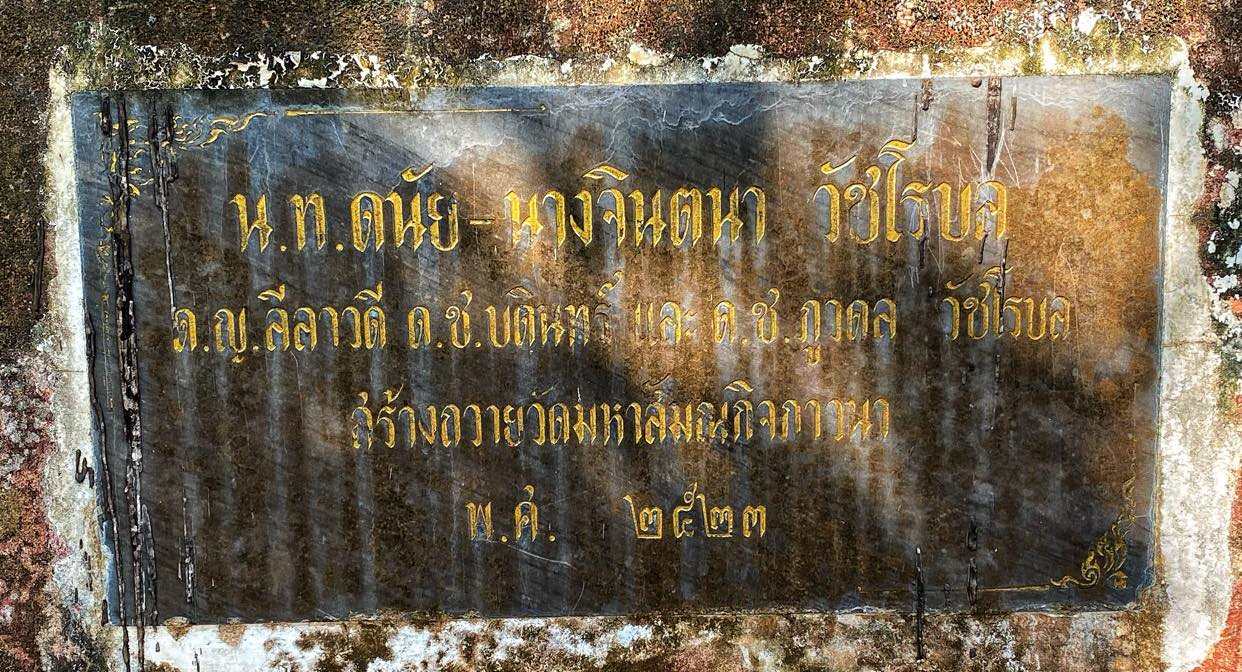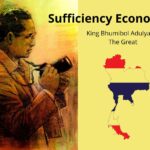
The Buddhist Era: How to Read Thai Dates

Thailand is the only country that uses the Buddhist Era calendar as its official date system, so it’s an important aspect of Thai life to understand. In the Thai language, the Buddhist Era is referred to as “PuttaSakarat” (พุทธศักราช). It gets abbreviated to the initials “พศ” when written beside dates, as frequently is seen in inscriptions on statues and buildings at Thai temples (signifying the date of construction). The English initials BE also are sometimes used.
The Buddhist Era calendar is a variation of the ancient Hindu calendar. The starting point is the the year of the Buddha’s “parinirvana” (death and final nirvana), which is believed to have occurred in the 5th century BC.
Different traditions date this event differently, but in the Theravada Buddhist tradition (which Thailand follows), it often is placed at 543 BC. This means that the Buddhist Era is roughly 543 years ahead of the Gregorian calendar used internationally.
In Thailand, the Buddhist Era began to officially be used as the calendar system on April 1st, 1913, during the reign of King Rama VI. It replaced the Rattanakosin Era, which replaced the earlier Chula Sakarat Era. Today, the Buddhist Era is widely used in Thailand alongside the Gregorian calendar that the rest of the world follows.
Visitors to the Kingdom therefore often will see the year (2024) published in English newspapers, magazines, and on signs. However, not always! Many official documents, Thai newspapers, and most forms of government and legal communications include dates only in the Buddhist Era.
It’s therefore good to know how to read Thai dates. To do so, simply subtract 543 years from the Buddhist Era year. The days and months stay the same. An entire Thai date is written in the following order: day/month/year.
So, if you see a date on a Thai document that reads 29/3/2567, this can be converted to March 29th, 2024. Or if you see an inscription at a Thai temple that reads “พศ 2403” or “2403 BE,” this can be converted to 1860.
To complicate matters a bit, the Thai date when inscribed on a cultural artifact like the statue of a famous Thai monk, or when written on the signage of a Thai festival, may appear in Thai script. Thai numbers and their Arabic equivalent are as follows:
0: ๐ (sūn), 1: ๑ (nūng), 2: ๒ (sǒng), 3: ๓ (sǎm), 4: ๔ (sì), 5: ๕ (hâ), 6: ๖ (hòk), 7: ๗ (jèt), 8: ๘ (pàet), 9: ๙ (kǎo)
This year, for example, might appear written as ๒๐๒๔ (2024) or พศ ๒๕๖๗ (Buddhist Era, 2567). In these situations, you might just want to use the camera function on Google Translate to read the Thai date for you. We discuss how to remember the Thai year in our article, “What Year is it in Thailand?”

The Buddhist Era in Thailand’s Neighboring Countries
As we mentioned, Thailand is the only country that uses the Buddhist Era as its official calendar. However, neighboring Southeast Asian countries like Laos, Burma, and Cambodia do use the Buddhist Era calendar for various religious and cultural activities. But the dating system varies slightly.
Cambodia Calendar
Cambodia uses the Buddhist calendar for religious and traditional purposes, similar to Thailand. However, the Cambodian Buddhist Era is reckoned to have begun in 544 BC, one year ahead of the Thai system. This difference means that the year in the Cambodian Buddhist calendar is one year ahead of the Thai Buddhist Era. The Cambodian calendar also incorporates elements of the traditional lunisolar calendar, where months are determined by lunar cycles but occasionally adjusted to synchronize with the solar year through the addition of an extra month.
Laos Calendar
Laos, much like Thailand and Cambodia, uses the Buddhist Era in a similar fashion for cultural and religious observances. The Laotian Buddhist calendar aligns closely with the Thai system, starting in 543 BC. It is used alongside the Gregorian calendar, especially in religious contexts and traditional festivals. The Laotian calendar also follows a lunisolar system, with adjustments made to align lunar months with the solar year.
Myanmar (Burma) Calendar
Myanmar’s Buddhist calendar is quite distinct. It traditionally reckons the start of the Buddhist Era as 544 BC, but employs a unique system of era calculation that can lead to differences in the year count. The Burmese calendar also incorporates complex schemes to adjust the lunar months in relation to the solar year, making it one of the most intricate Buddhist calendar systems. The calendar is used for religious and cultural purposes and plays a central role in determining the dates of Buddhist festivals and traditional ceremonies.
- Monogamy and the Mia Noi in Thailand - April 27, 2024
- How to Greet a Monk in Thailand – Saying Hello - April 22, 2024
- Hottest Place in Thailand – Record High Temperature 2024 - April 22, 2024




